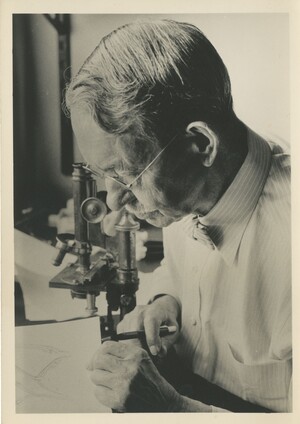Conklin tells the story of how he began working on this slipper snail, Crepidula fornicata, for which the individuals live in a cluster. Males become females as they age, and they all fertilize each other. As Conklin put it, it “was an animal that didn’t amount to a damn.” But it turned out that for cell lineage work various species of Crepidula provided a perfect subject, with very clear nuclei and other details of cell division. He saw that cells divide according to patterns, and that cells have different fates, depending on where they are and their relation to other cells and to the environment. For example, his meticulous observations determined that the mesoderm germ layer comes from a single cell.
The MBL Embryology Course included study of the microscope slides that Conklin made to show the stages of Crepidula development. The 1939 Embryology Course, led by Viktor Hamburger and taken by John Philip Trinkaus, among others, shows the basic ideas and methods of a field nearing the heights of work in experimental embryology.
Conklin carried out this work at first at he U.S. Fish Commission (in 1891) and then at the Marine Biological Laboratory in Woods Hole, Massachusetts. The MBL Director Charles Otis Whitman was enthusiastic, as was Edmund Beecher Wilson, another Johns Hopkins graduate whose own cell lineage studies at the MBL on the flatworm Nereis provided valuable material for comparison.
- Allen, Garland E. “Conklin, Edwin Grant.” Dictionary of Scientific Biography 3: 389–91.

